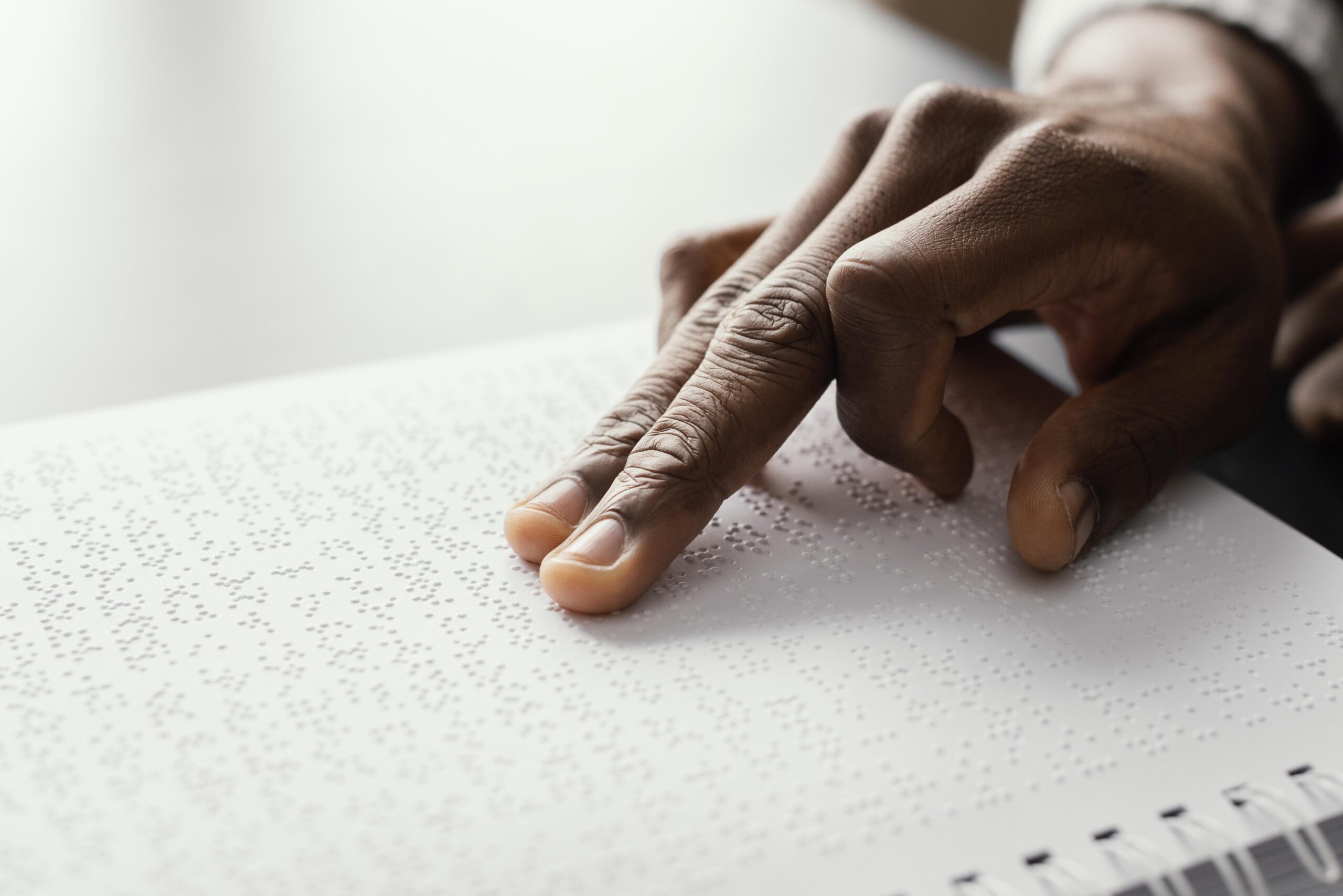Braille is a system of reading and writing for the blind and visually impaired. It consists of a series of raised dots that can be felt with the fingertips. The system was invented in the early 19th century by Louis Braille, a Frenchman who lost his sight at a young age.
Over the years, standard braille transcription has evolved from a simple system of raised dots to a comprehensive and standardized system that allows blind and visually impaired people to read and write in a variety of languages and disciplines.
In this article, we will discuss the invention and evolution of Braille from being a blind kid’s invention to developing into the current modern Music Braille Code (MBC), as well as its introduction into the world of music.
Louis Braille’s Accident and Invention
Louis Braille was born in 1809 in Coupvray, France. When he was three years old, he accidentally poked himself in the eye with his father’s awl and lost his sight as a result. Despite his disability, Braille was an excellent student and eventually became a teacher at the Royal Institute for Blind Youth in Paris.
In 1821, a French army officer named Charles Barbier visited the school and demonstrated his “night writing” system. This system consisted of raised dots and dashes that could be felt with the fingertips, allowing soldiers to communicate silently in the dark.
Although Barbier’s system was too complex for practical use, Braille was inspired by the idea of using raised dots to create a system of reading and writing for the blind. Braille began working on his system in 1824 when he was just 15 years old.
He based his system on Barbier’s night writing but simplified it by using a six-dot cell instead of Barbier’s twelve-dot cell. The six-dot cells in braille transcription allowed for more efficient use of space and made the system easier to read and write.
The Birth of the Braille Script
The first Braille book, a copy of the French alphabet, was published in 1829. Over the next few years, Braille continued to refine his system and expand its use. By the time of his death in 1852, Braille’s system was being used in schools for the blind throughout Europe.
Early Developments in Braille Music Notation
Music notation has long been a challenge for blind and visually impaired musicians. In the early 19th century, blind musicians had to rely on memorization or on handwritten notes that were difficult to read. In the mid-19th century, a British musician named William Moon developed a system of raised print that allowed blind musicians to read music notation. However, Moon’s system was difficult to learn and was never widely adopted.
In 1829, just a few years after Louis Braille invented his system, a blind French musician named Simon-Pierre Gérard published a book on music notation in Braille. Gérard’s system used the standard rules of braille transcription by using a six-dot cell and included symbols for notes, rests, and other musical elements. However, Gérard’s system was not widely adopted and was eventually replaced by more comprehensive systems.

In the late 19th century, a blind American musician named George F. Kline developed a system of music notation that used a combination of Braille cells and print characters. Kline’s system, which he called the “Kline Notation,” was widely used in schools for the blind in the United States and other countries. However, the Kline Notation was never standardized and was eventually replaced by more comprehensive systems.
The Modern Music Braille Code
The years of evolution gave Braille a new form, that is the current standard used around the world for Braille music notation – The Music Braille Code, also known as the Braille music notation system. The system was first developed in the early 20th century by a blind American musician named Edmund E. Blied. Blied’s system was based on the Braille alphabet and included symbols for notes, rests, and other musical elements.
Throughout the 20th century, Braille continued to evolve and become more widely used. In 1932, the first Braille music notation textbook was published, providing blind musicians with a standardized system for reading and writing music.
Development and Evolution
This was a significant development, before which Braille music notation was not standardized, and blind musicians had to rely on handwritten notes or memorization to learn and perform music. The publication of the first Braille music notation textbook helped to establish a standardized system of Braille music notation, which has continued to evolve and improve over time.
Advancements in technology have also played a crucial role in the evolution of Braille. In the mid-20th century, Braille typewriters became widely available, allowing blind individuals to type Braille text independently. Later, the development of refreshable Braille displays and electronic Braille note takers made it easier for blind individuals to access information on computers and mobile devices.
These technological advancements have made Braille more accessible and convenient for blind individuals in the modern age. Today, braille transcription services provide an invaluable resource for blind individuals. These services use modern technology and highly trained transcribers to create Braille versions of a wide range of materials, from textbooks and technical manuals to literature and music.
Today people can get their texts transcribed while sitting at home over phones and the internet. Technology has truly helped Braille reach new heights and with time, it will evolve into a far more advanced system that will help more people communicate and live a life even without vision.
The Power of Modern Braille Transcription
Transcription services can also provide tactile graphics, allowing blind individuals to access information such as maps, charts, and diagrams. These services have made it possible for blind individuals to access the same information and resources as their sighted peers, opening up new opportunities for education, employment, and independent living.
Using technology to maximize availability and connect to more people using the system, modern Braille transcriptions are most of the time mistake-proof, accurate and reliable, and can be checked instantly for mistakes compared to older methods.
In the future too, technology will be seen truly helping Braille evolve into a far more advanced system guiding the blind.
Conclusion
The evolution of Braille has been a remarkable journey from its invention in the early 19th century to modern-day transcription services. Louis Braille’s invention of the six-dot system was a groundbreaking innovation that has stood the test of time and continues to be used worldwide.
Over the years, Braille has undergone various improvements and adaptations, such as the development of music braille and computer braille, which have made it more accessible and user-friendly. Today, modern transcription services provide Braille translation services with a high degree of accuracy and speed, ensuring that blind individuals have equal access to information as their sighted counterparts. At Braille Music and More, we provide top-notch transcription services for a variety of genres. If you are in need of accurate and timely braille transcriptions, then get in touch with us today.







